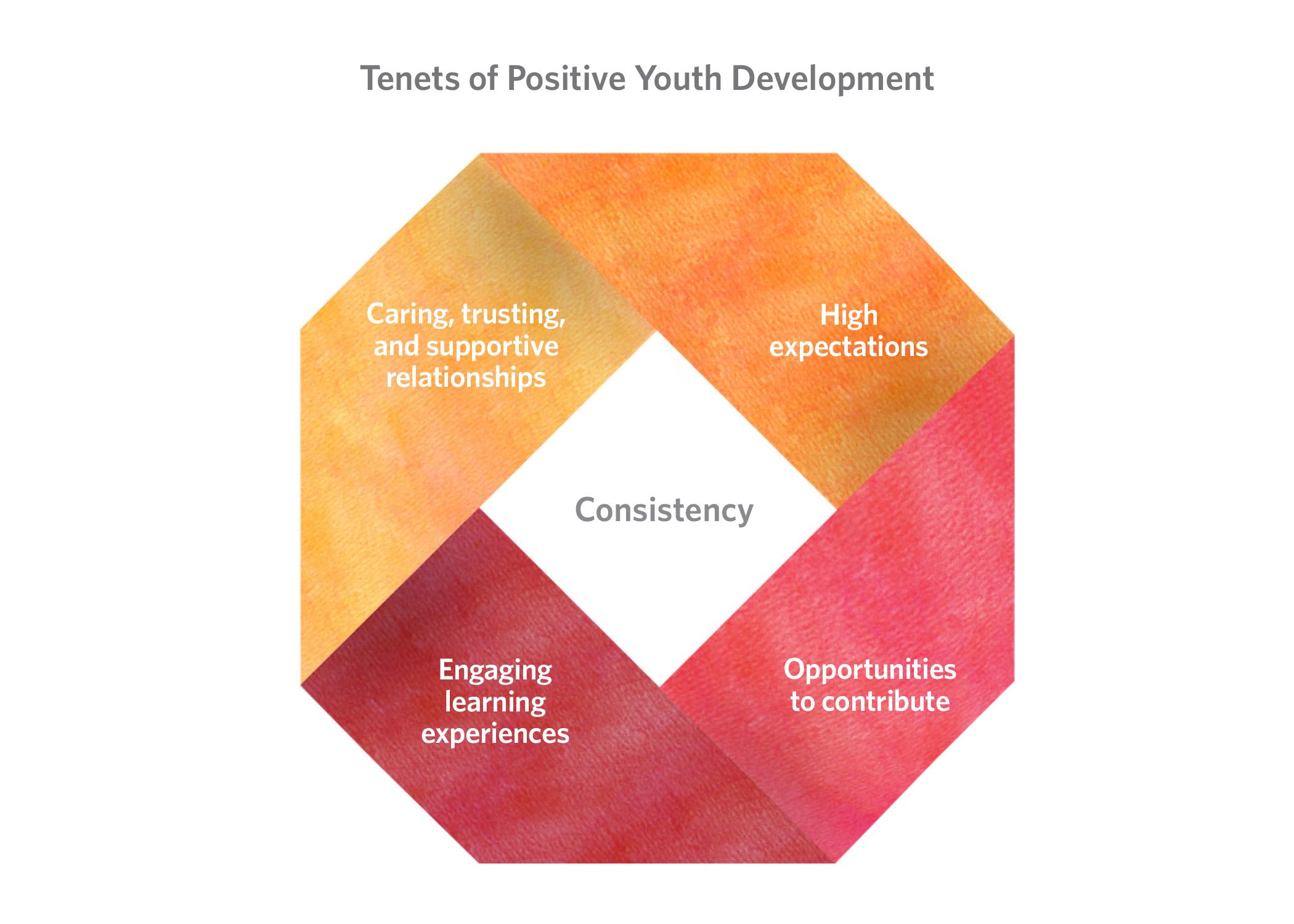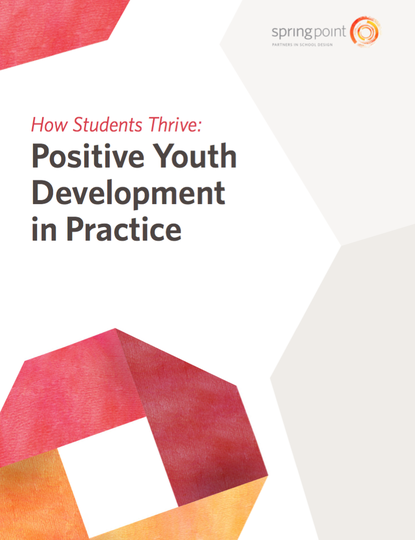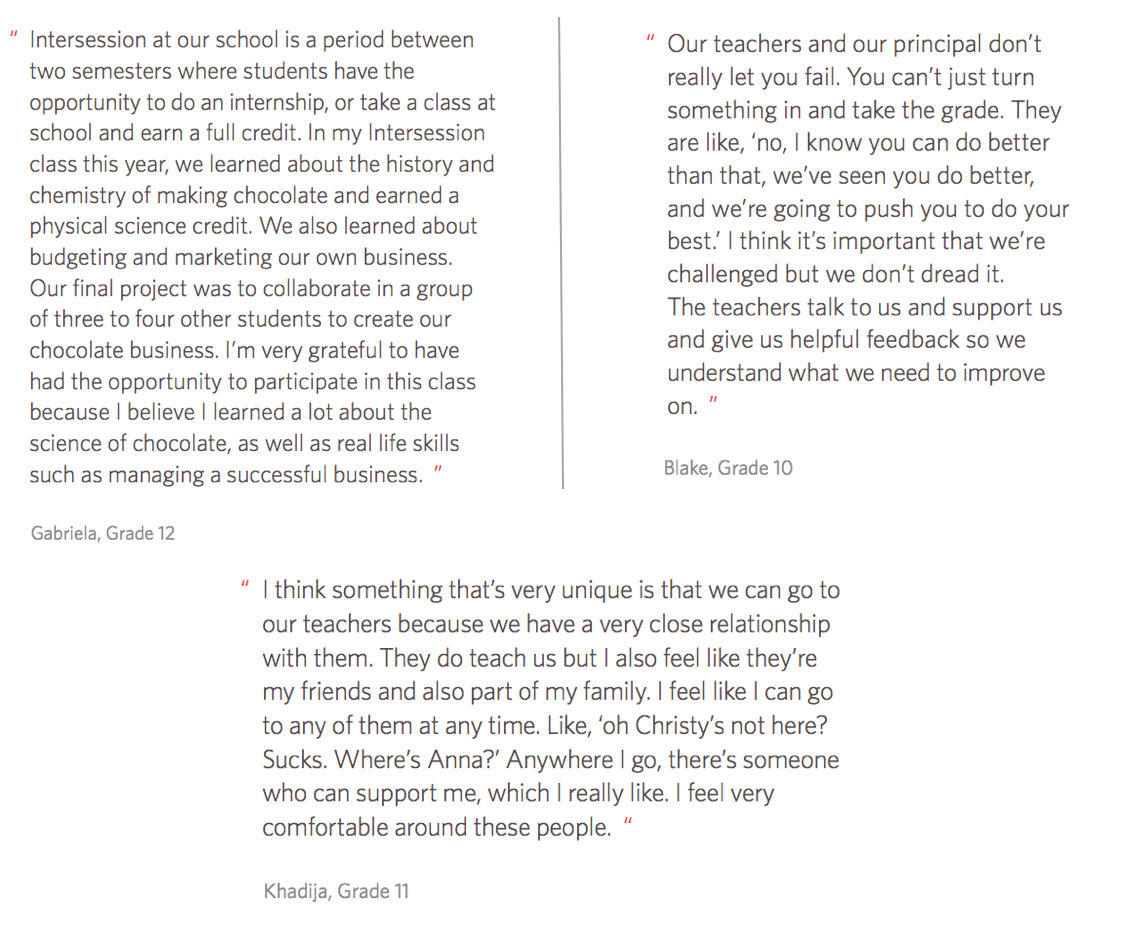Schools are more than just places where young people acquire knowledge and skills for college and career. They are—first and foremost—places where young people form their identities and begin to see themselves as independent adults. Great schools guide young people in this essential effort by creating safe learning environments where students feel known, valued, supported, challenged, and recognized. This approach, known as positive youth development, is the focus of our newest publication, which you can download here.
Positive youth development theory must guide every design decision that a school makes. In practice, positive youth development is not separate from academics or enrichment—rather, it is the bedrock upon which a school is designed. Students experience it in every part of their day, both inside and outside of the classroom.
Supporting young people’s development, which we highlighted as a top priority in our design guide, has implications for every educator, from school designers to teachers, leaders, and administrators. We’ve identified five tenets of positive youth development that are crucial in the design of student-centered schools:

- Young people need caring, trusting, and supportive relationships with adults and other young people. Strong personal relationships help form a community where young people feel supported and valued in all aspects of their school experience, from in-class interactions to out-of-class enrichment.
- Young people respond to high expectations. Expectations are rigorous, consistent and respected by both young people and adults.
- Young people need opportunities to contribute. Often referred to as “choice and voice,” young people have the autonomy and opportunities to make real contributions to the school community.
- Young people need learning experiences that intentionally engage their interests. Young people are set up to succeed in pursuits they perceive as meaningful, with access to regular feedback that helps them reflect on their growth.
- These tenets are consistently present. Young people expect them from their school environment.
This paper draws from research on adolescent psychology, cognitive science, and positive youth development theory and practice. It provides examples of how practitioners can ground their schools in positive youth development theory, and highlights the voices of young people who speak to the impact of intentionally designed, student-centered schools on their lives.
We hope this paper is useful for our colleagues and friends who are designing great schools where students thrive. Please read, share, and send us any feedback or thoughts you have!

